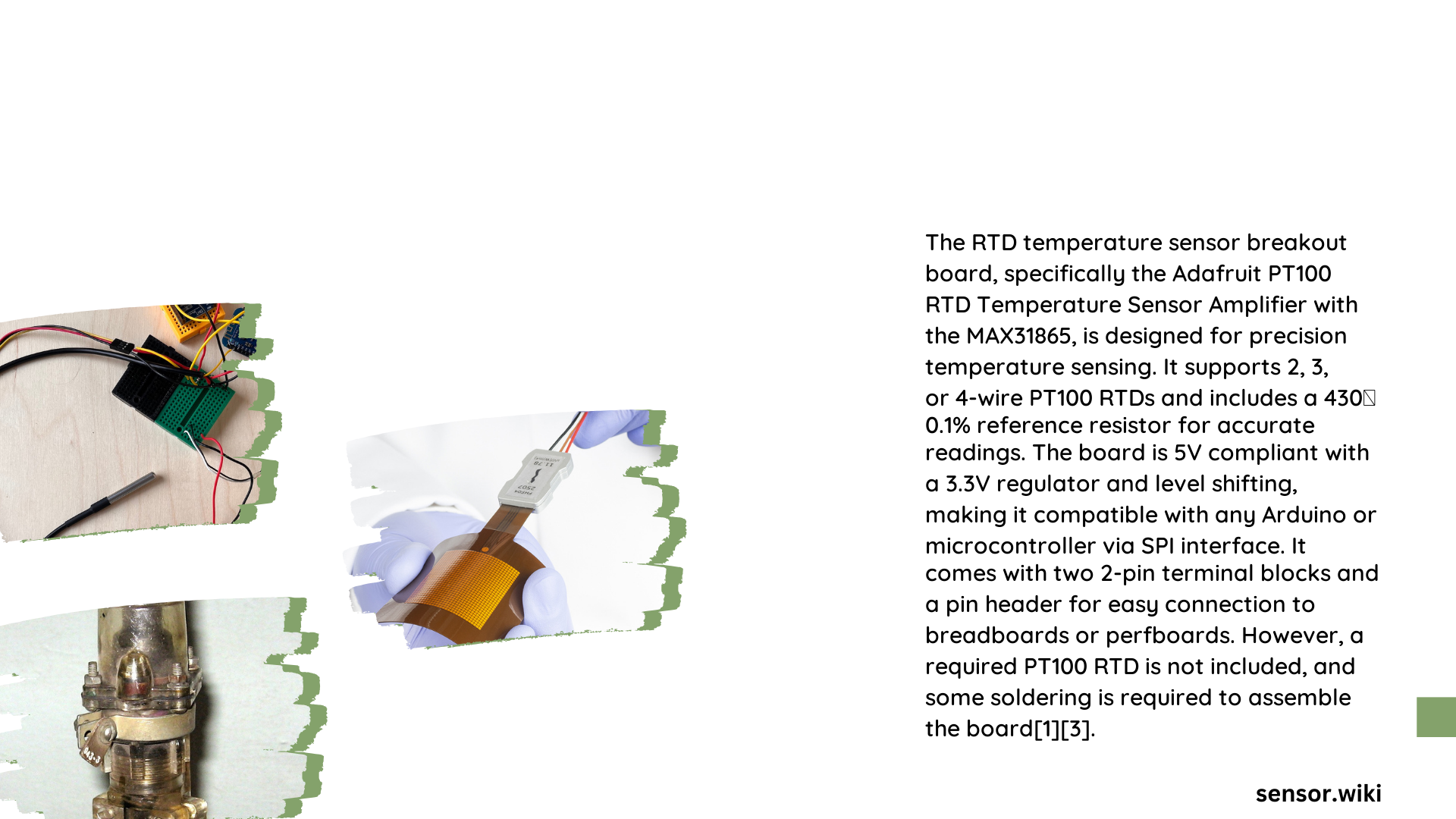The RTD temperature sensor breakout board represents a sophisticated electronic solution for precise temperature measurement across diverse industrial, scientific, and engineering applications. Utilizing the MAX31865 amplifier chip, this advanced board enables high-resolution temperature sensing with exceptional accuracy, supporting both PT100 and PT1000 resistance temperature detectors (RTDs) and offering digital signal processing through a straightforward SPI interface.
What Makes RTD Temperature Sensor Breakout Board Unique?
Why Choose an RTD Temperature Sensor Breakout Board?
RTD temperature sensor breakout boards provide engineers and hobbyists with a robust, accurate temperature measurement solution. Unlike traditional temperature sensors, these boards offer:
- High Precision: Measurement resolution as fine as 0.03125°C
- Wide Temperature Range: Capable of measuring temperatures up to 850°C
- Flexible Configuration: Supports 2, 3, and 4-wire RTD sensor connections
- Digital Interface: Easy integration with microcontrollers via SPI
How Does the MAX31865 Amplifier Enhance Temperature Measurement?
The MAX31865 amplifier is the core component that transforms raw RTD sensor signals into precise digital temperature readings. Its key features include:
- Automatic gain and offset calibration
- Programmable fault detection
- Support for PT100 and PT1000 sensor types
- Configurable digital filtering
| Feature | Specification |
|---|---|
| Supply Voltage | 3.3V – 5V |
| Temperature Resolution | 0.03125°C |
| Sensor Compatibility | PT100, PT1000 |
| Communication Interface | SPI |
What Are the Typical Applications?
RTD temperature sensor breakout boards find applications in numerous domains:
- Industrial process control
- HVAC systems
- Laboratory research
- Automotive temperature monitoring
- Food processing equipment
- Medical devices
How to Wire and Connect the RTD Sensor Breakout Board?
Connecting the RTD temperature sensor breakout board involves several critical steps:
Pin Configuration
- VIN: Power supply connection (3.3V – 5V)
- GND: Ground connection
- SCK: Serial clock input
- MISO: Master input, slave output
- MOSI: Master output, slave input
- CS: Chip select pin
- RDY: Data ready indicator
Recommended Wiring Practices
- Use 3-wire or 4-wire configurations for maximum accuracy
- Select appropriate wire gauge (recommended 22 AWG)
- Minimize wire length to reduce signal interference
- Ensure proper shielding of sensor cables
What Factors Affect RTD Sensor Performance?
Several environmental and design considerations impact RTD temperature sensor breakout board performance:
- Temperature Range: Determined by specific RTD sensor characteristics
- Accuracy: Influenced by sensor quality, wiring configuration, and calibration
- Response Time: Typically milliseconds to seconds
- Environmental Conditions: Consider humidity, pressure, and electromagnetic interference
Compatibility and Integration Strategies
RTD temperature sensor breakout boards are compatible with:
– Arduino platforms
– Raspberry Pi
– Various microcontrollers supporting SPI
– Custom embedded systems
Conclusion

The RTD temperature sensor breakout board offers a powerful, flexible solution for precise temperature measurement across multiple domains. By understanding its capabilities, wiring requirements, and integration strategies, engineers can leverage this technology for advanced sensing applications.
